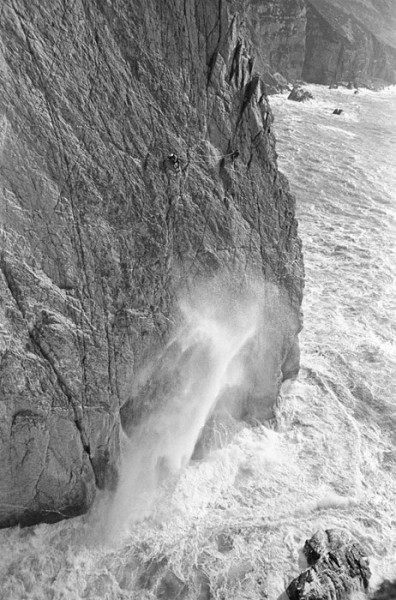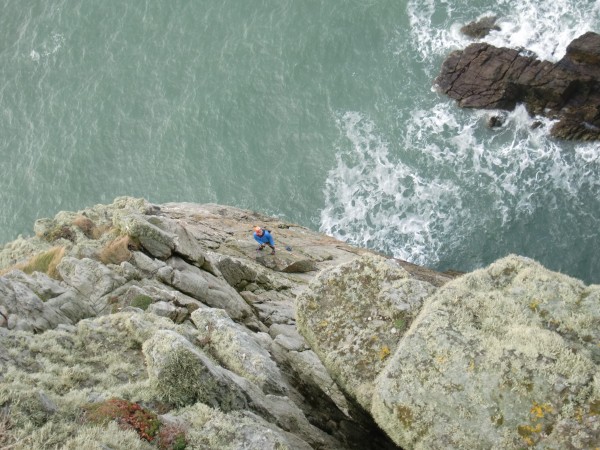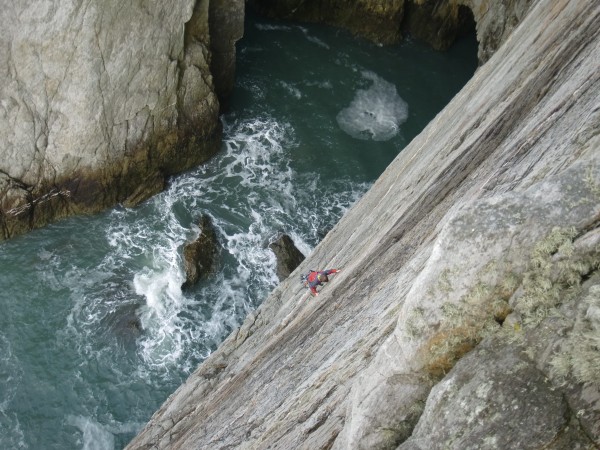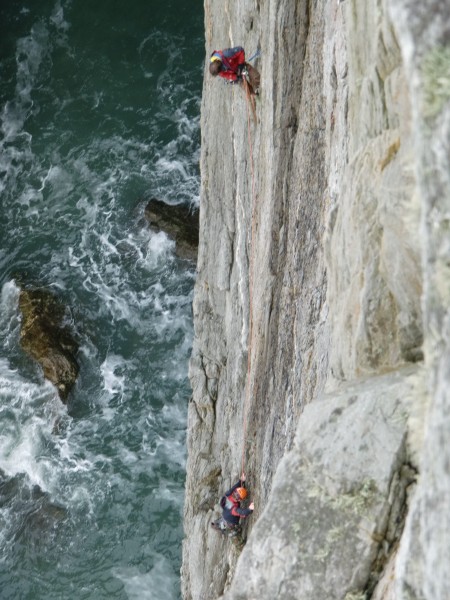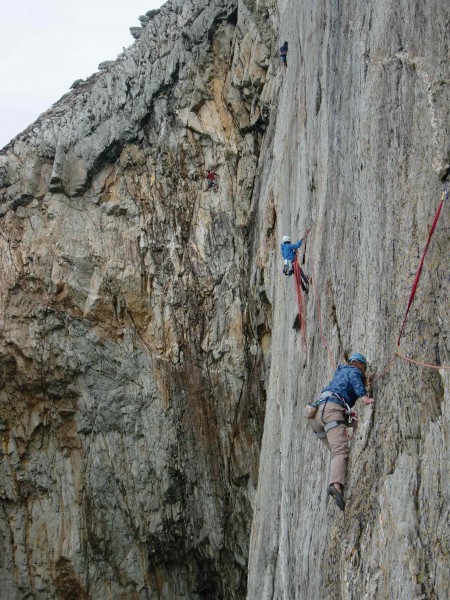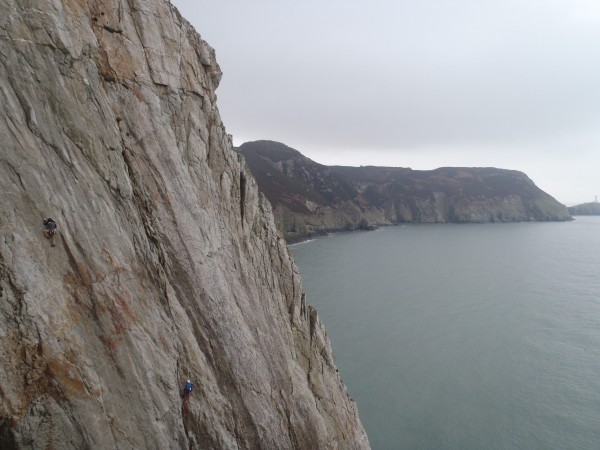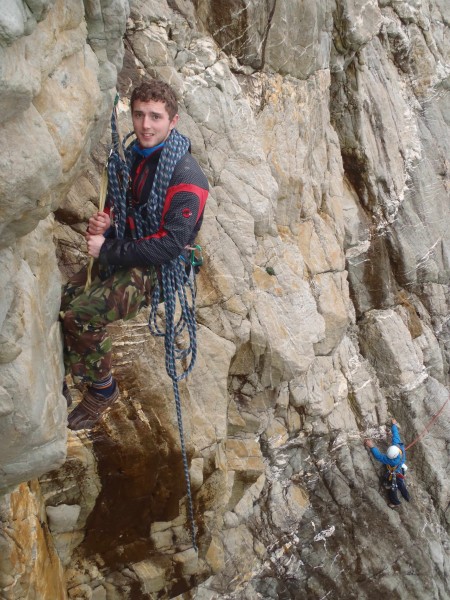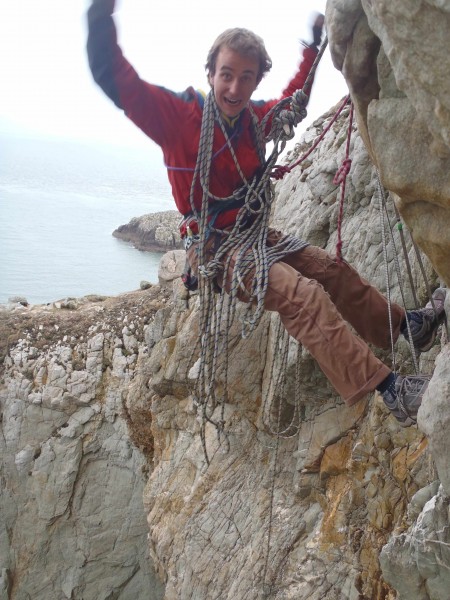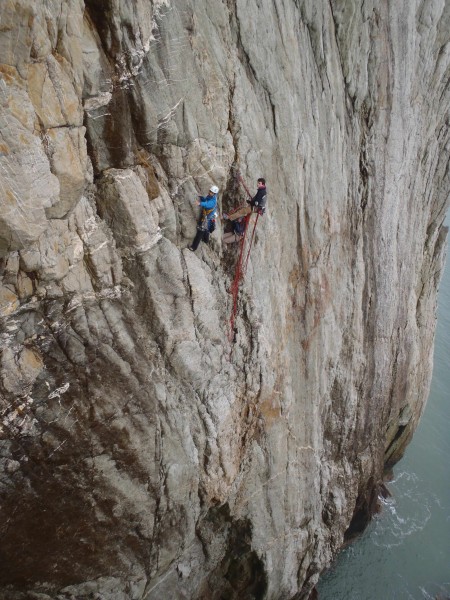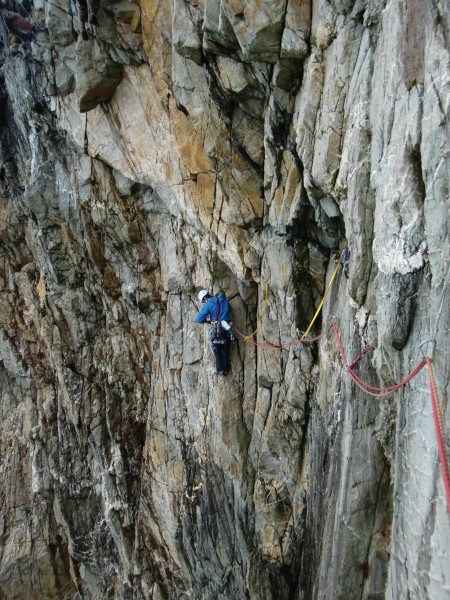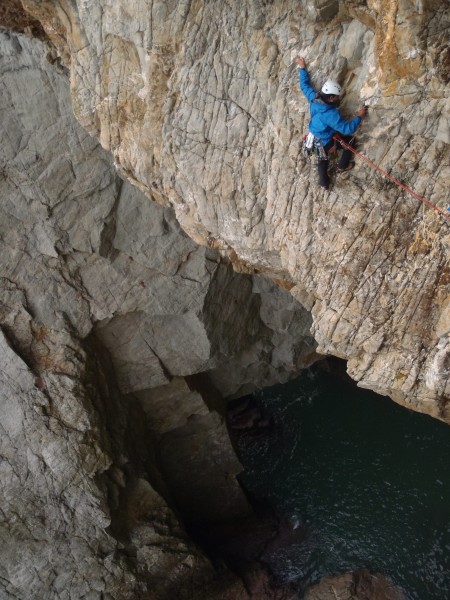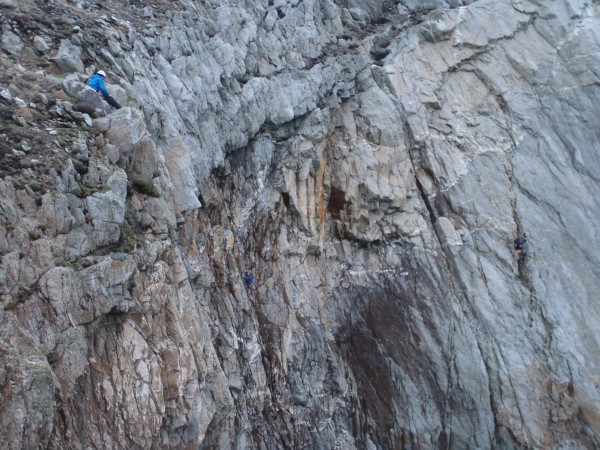For any climber that is new to the trad scene in the UK the first obstacle is the grading system. What follows is an introduction to the trad grading system and it will become clear how it differs from most grading systems that we in the States are familiar with. The grading system in the UK consists of two grades, a technical grade and an adjective grade. The techinical grade is what we would expect it to be; it is supposed to be a reflection of the single hardest move on a pitch. The adjective grade on the other hand is a reflection of the overall seriousness of the climb. At first this system was a little confusing and I was never certain if the climb I was getting on was within my limits or not (in hindsight, this may have been a good thing) but in every system there is a logic to the madness. Once the system was explained to me it became clear to me that a lot of information about a climb could be conveyed through it and I have come to love it. Every adjective grade has a baseline technical grade associated with it. The following is the list of adjective grades, in ascending order, along with the British tech baselines:
Mod (Moderate), Diff (Difficult), VDiff (Very Difficult), HVD (Hard Very Difficult) - these are all easy enough that no tech grade is usually associated with them
S (Severe) - 4a
HS (Hard S) - 4b
VS (Very S) - 4c
HVS (Hard VS) - 5a, YDS equivalent ~5.9
E1 (start of the Extremely hard/severe/difficult routes) - 5b, YDS equivalent ~5.10a/b
E2 - 5c
etc.
If a route is high in the adjective grade but low in tech this would imply a bold/committing/longer than usual climb. Time for Tea (http://tinyurl.com/75bsr8k);, put up by Ed Drummond in 1975 (he put up Dream and the Longhope Route), is a good example of a climb that is bold for a 5c climb. On the other hand, a climb that has a high tech grade but has a low adjective is as the British like to say, “safe as houses but hard as nails”. Eliminator (http://tinyurl.com/7bzvb5n); at Stanage, which I recently ticked, is a good example of this type of climbing -- gear at your waist at every hard move. Applying this system to some climbs in the Valley its utility becomes quickly apparent. For example, the Steck-Salaté route on the Sentinel -- it is considered a ‘hard’ 5.9 (I wouldn’t know from personal experience but from my recollection Clint seems to agree). This route would probably be given an E1 5a grade according to the British system, reflecting the fact that it is a little more serious than your average 5.9 and in fact, taking this further, you could probably add an adjective grade to most of the Tuolumne slab climbs that were established early on. Anyway, I think I’ve bored you all enough with details of how the British system works and I should get back to describing my experience of climbing a classic -- A Dream of White Horses (HVS 4c).
As with all climbing trips from Cambridge, the trip to North Wales includes driving at least four hours with unpredictable weather once at the destination. This weekend's crew consisted of just one car -- Andrew Marshall, Ed Feldman, Celyn Thorpe, Liam Carter and myself -- the others in the club were put off by the possibility of bad weather (and I would have been too except that I could not pass up the possibility of ticking Dream). We had the luxury of Celyn’s parents’ house for basecamp, this meant coming back to home cooked food and a warm bed -- we were spoiled. Their house is located just outside the town of Caernarfon and on a clear day one can see all the way across to the Isle of Anglesey from the window. Much to my dismay, I woke up on Saturday morning and couldn’t see Anglesey. We took a quick look at the forecast and decided that we would have a better shot at climbing at Gogarth on Sunday and so we went to Tremadog (pronounced tre-mad-eck for those of us who don’t speak Welsh) for the day to climb on slightly damp volcanic something (thanks Laurence Cowton for the correction). The climbing at Tremadog was had its surprises but I will leave those stories for another day. Homemade pizza for dinner and dreams of good weather capped the night.
A Dream of White Horses is chronicled in the book, “Hard Rock”, by Royal Robbins’. His write up of the climb can be found in this thread (elegant prose to which mine cannot be compared) - http://tinyurl.com/7bxwc93.
The above photo is one that will forever be etched in my mind and it characterizes the atmosphere of this climb very accurately. This photo together with Robbins’s prose had built up great expectations of this climb for me. That morning's drive to Anglesey was filled with excitement and that weird feeling that only climbers understand, the one that creeps in when taking on a climb that is a little more serious than your everyday climb. We were soon at the rappel anchors and my stomach was churning.
We decided that we would all climb Dream, with Ed and Drew leading the charge as a pair while Celyn, Liam and myself climbed in a separate group. Since Dream is a climb that traverses a significant amount (much like On the Lamb in Tuolumne) it was imperative that every climber in the party was climbing at the required level. Now add to this the fact that once you are past the first pitch the only escape from Wen Zawn is by finishing Dream and this becomes a rather committing affair (especially for a group of climbers whose limit is HVS). At HVS 4c the climbing is a romp but as the grade indicates it is a very committing climb. Celyn is a super strong climber (with far superior technique than myself) but she wasn’t keen on leading because of the exposure so Liam and I were left swinging leads. To be honest, Celyn wasn’t super psyched to be following either and it was only the promise that we would scatter cookies along the length of each pitch that convinced her to join us.
Once Drew was at the first belay station I rapped into the climb and we were on, committed to climb Dream. The rappel in felt very eerie but nothing like the feeling I would get looking into the Zawn from above the middle of the last pitch. I set off on the first pitch was as beautiful as Robbins describes it. Holds reveal themselves when you look for them, feet in just the right places and protections nicely spaced out -- I was in a state of flow and soon enough at the end of P1.
While Liam was firing up the second pitch, Ed and Drew had finished the climb and took on the role of professional photographers and began setting up a rappel anchor above the final pitch.
Another stunning pitch flowed by smoothly and Liam was setup at the second hanging belay. As I took him off belay I made the mistake of dropping my belay device, gah. Since there was no real descent and we were climbing in threes this was more of an inconvenience than anything else. By this time I thought my bladder was just about ready to explode and as soon as Celyn left the first belay I turned towards the ocean and breathed a sigh of relief. I wasn’t the only one who was having trouble with bladder control though. Liam had been holding it in ever since I brought him into the first belay and forgot to go after setting up the second belay. Under normal circumstances one would be left wondering how you can forget to take a piss if you’ve been holding it in for this long but I found it in myself to forgive him considering the atmosphere of this pitch, :D. It was only after he brought Celyn and I upto the second belay that he decided that he needed to let loose; this was a hanging belay, mind you, and Celyn wasn’t pleased :D. This wasn’t Liam’s only transgression on the climb -- he had, in the meantime, finished all of Celyn’s ‘send’ cookies, which resulted in a bit of a motivation issue on the third pitch :P.
With the start of the final pitch staring at us and our professional photographers setup to capture us on this wild pitch, I turned the psyche on. As soon as I got going I got hit with disco legs. I didn’t think I was afraid but it just refused to go away throughout the pitch, maybe it was a reflection of a hidden nervousness inside of me. This pitch was still wet from Saturday with plenty of seepage along the way and I was glad that I had decided to carry a hand towel as part of my rack (a habit that I have developed while climbing in the UK). The line on this pitch was not very obvious and I was never able to guess more than two to three moves ahead. This coupled with the expanse of the zawn below me made the climbing on this pitch unforgettable.
At many points along this pitch I was left staring directly down at the water. I came to the crux and it involved reaching around a block not knowing what you were aiming for with the void of the zawn below me. But as always on this climb a big jug and the appropriate feet could not remain hidden for long. I finished the pitch, setup the belay, and as I was pulling the rope in it turned into a ball of spaghetti at the other belay. This took a good half hour to sort out and by the time Celyn started climbing again I realized that we were in for a tight finish.
Celyn was going strong until the crux of last pitch, but without the help of the ‘send’ cookies her courage waned and a bit of a panic attack ensued. We lost a little more time while we cajoled her back into climbing mode. All of this was not helping Liam’s case, and by the time he left the belay and worked a stuck nut free daylight had started fading fast. Using the faint light that was cast on the climb by the distant lighthouse and a headlamp shone by Ed from the promontory Liam clawed his way through the climb barely able to make out the handholds. Liam was a real trooper considering that this was his first multi-pitch and he was benighted. At the belay, my feet felt like wooden stumps but I could not have been happier as Liam’s head poked out and we started sorting our gear. Now lay the most dangerous part of the day -- the 4 hour drive back to the flat lands of Cambridgeshire.
